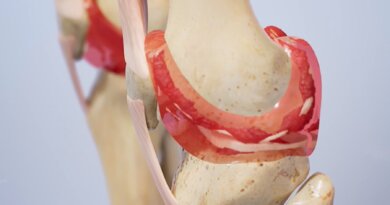Like Son, Like Father: Bipolar Through The Generations
When my life was in decay, my brain on fire, and I was lost in excruciating depression, it was my dad who rescued me. When I was drinking two six-packs of beer or more every night and smoking crack cocaine, it was my dad who flew from Hawaii to Chicago to spearhead my intervention and save my life.
Norm Bezane is the ultimate dad. He is a superstar father who values kindness above all else. I was an infant when he quit his job to be a full-time “househusband,” as he likes to call it. He was the one who cleaned the house, cooked dinner, baked chocolate chip cookies, drove us to and from school, helped with homework, and took my sister and me to swimming lessons.
He is a touchy-feely, empathetic human being who taught my sister and me to follow the golden rule, to advocate for peace, and to respect all people.
My dad rescued me from the bipolar abyss when I was diagnosed in 2008. This past fall, I rescued him.
In Common
Norm is a sensitive soul who strives to achieve harmony in everyday life. So am I.
We both tinker with words. In our 20s, we each had challenging, high-pressure jobs in cutthroat media landscapes. I was a producer for MTV News from 2001-2007. In 1965, my dad was at Businessweek, and that summer after the civil rights demonstrations in Selma, Alabama, my dad interviewed the Rev. Dr. Martin Luther King Jr.
We’re both book authors. He wrote four books about Hawaii, where he has retired with my mom. I wrote a memoir about my mania, depression, and addiction in New York City, and my continued addiction and recovery in my hometown of Chicago, where I did hardcore drugs on the streets with homeless people before my dad saved me.
And in 2015, 7 years after I was diagnosed with bipolar disorder, my dad found out he also has the disorder. This after more than 50 years living with the incorrect diagnosis of depression.
It happened on a trip to visit Chicago 7 years ago when my dad decided to see his former psychiatrist. He’d been feeling depressed despite the Prozac he was taking. This time the doctor sent him on to a specialist, who declared that he had “classic bipolar.”
There are 5.7 million people in the U.S. living with bipolar disorder, according to the National Institute of Mental Health. Bipolar is a mood disorder previously known as manic depression. People with this disorder drift between two emotional poles, periods of crippling depression and periods of extreme happiness, known as mania, that are accompanied by grandiose thinking and sometimes psychosis, delusions of grandeur, and hallucinations.
I’ve had all of the above. Lithium was the magic bullet for me, and I haven’t had a major manic or depressive episode since I started it in 2008. Thanks to my family, and thanks especially to my dad, I am a recovering alcoholic, sober for 10 years.
It’s well established that bipolar can be passed genetically. Children with one bipolar parent have a 10 to 15 percent chance of developing the disorder, and children with two bipolar parents have a 10 to 50 percent chance.
Undiagnosed
I was diagnosed bipolar after a panic attack while working on the live show “MTV’s Presidential Dialogue With John McCain” during the 2008 election. I was already depressed but I couldn’t bear the anxiety, irritation, and sweaty palms that haunted me. I was prescribed Prozac, but almost immediately skyrocketed into mania, which can happen when a bipolar person takes an antidepressant without a mood stabilizer.
I thrived at work, cranking out stories and videos. But I also created esoteric websites, updated my Facebook status every 5 minutes, and went on a shopping spree that included a $1,600 non-returnable Paul Smith tailored pinstripe suit, a classic hallmark of bipolar disorder.
My dad’s bipolar disorder wasn’t necessarily late onset; it was just undiagnosed. When he was 28, he experienced a nervous breakdown and checked himself into a psych ward. He doesn’t remember the specifics, but at the time he may have been diagnosed with generalized anxiety disorder.
He lived with that depression for decades and was prescribed Prozac. He had bursts of hypomania, a milder form of full-blown mania, but, channeled into his work, those mostly flew under the radar.
His prolific literary output may have been a symptom of his undiagnosed disorder. He would type, talk, and walk extremely fast. He was banned for life from a local oceanfront restaurant after gatecrashing a party to try to meet a famous painter. He was obsessed with photography, particularly creating themed pictorials featuring various colors. Creative madness goes with the territory of bipolar.
A Last Resort
In my major depressive episode, I had cried every day, sometimes sobbing, sometimes hysterically. But my dad barely left his easy chair. He stared blankly at the television, watching copious amounts of MSNBC.
His doctor prescribed a litany of drugs and they tried different combinations and dosages with no success. Nothing was working. Not even ketamine, an erstwhile party drug known by its street name Special K, lately used as a treatment for depression.
His depression was so treatment-resistant that in the fall of 2021, he traveled with my mom to Chicago, where I live and there is better medical care to undergo electroconvulsive therapy, or ECT.
ECT is considered a last resort for depression. While not torturous like early electroshock therapy, it does consist of pulses of electricity administered to the brain through carefully placed electrodes in order to induce seizures, which are known to be therapeutic. Patients are put under anesthesia and given muscle relaxants so their bodies stay still. They don’t experience any pain and they don’t remember the treatment.
My parents rented an apartment in downtown Chicago near where my sister lives. I crashed on the couch almost every night, giving him cheerful greeting cards, balloons, Halloween candy, or flowers in hopes of lifting his mood.
He had 12 ECT treatments: three times a week over a period of a month at University of Chicago Hospitals.
I accompanied him for about half of those, with my mom covering the rest. My sister, who works at UChicago as a teacher, drove us to the hospital each morning. I was at his bedside before treatment. And I was there afterward as he recovered from anesthesia.
My brother-in-law picked us up and drove us back to the rental, where I hung out with my dad each day, watching happy movies. I constantly reminded my dad that things get better, that treatment works. But he didn’t feel better, even after a dozen ECT sessions.
The doctors counseled patience, which my own psychiatrist echoed, telling me ECT could take a couple of months to kick in. They were right.
Rise in the Fall
In October, I traveled back to Maui with my post-ECT dad. He was still depressed and his physical health had deteriorated so severely from the inactivity that I had to push him through the airport in a wheelchair.
I stayed to help. I cooked dinner, walked the dog, washed the dishes, and drove my dad to doctor appointments and to physical therapy to restore his depression-ravaged body.
And I watched him rise from the pits of hell. By December, the depression was gone.
I’m still on Maui with my parents. My dad needs a walker outside the house, but his emotional health is steady.
It’s hard for someone who has not suffered deep depression to empathize or even fathom how destructive it can be. But I understand because I suffered too. My dad’s father died by suicide at the age of 76, a fate my dad doesn’t have to share. He just turned 84. He is alive. He is triumphant and he is joyous and he is free. My dad is happy again. And he is grateful. I’m grateful too.
Like son, like father.
Conor Bezane is the author of The Bipolar Addict: Drinks, Drugs, Delirium, & Why Sober Is the New Cool, available on Amazon. He is a Chicago-based writer with bylines in MTV News, VICE, and AOL. He is a regular contributor to The Mighty.





brand cialis in the us: differences between viagra levitra and cialis real cialis
celexa 1101